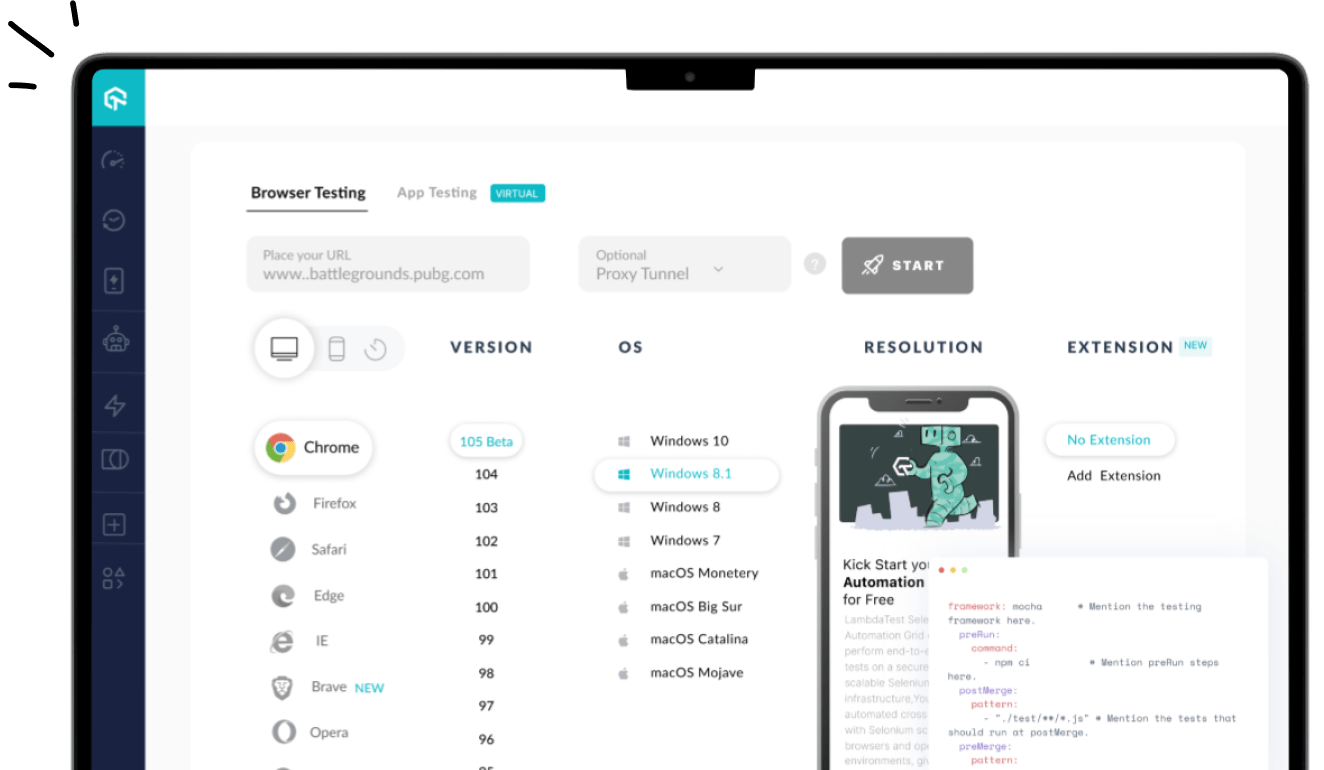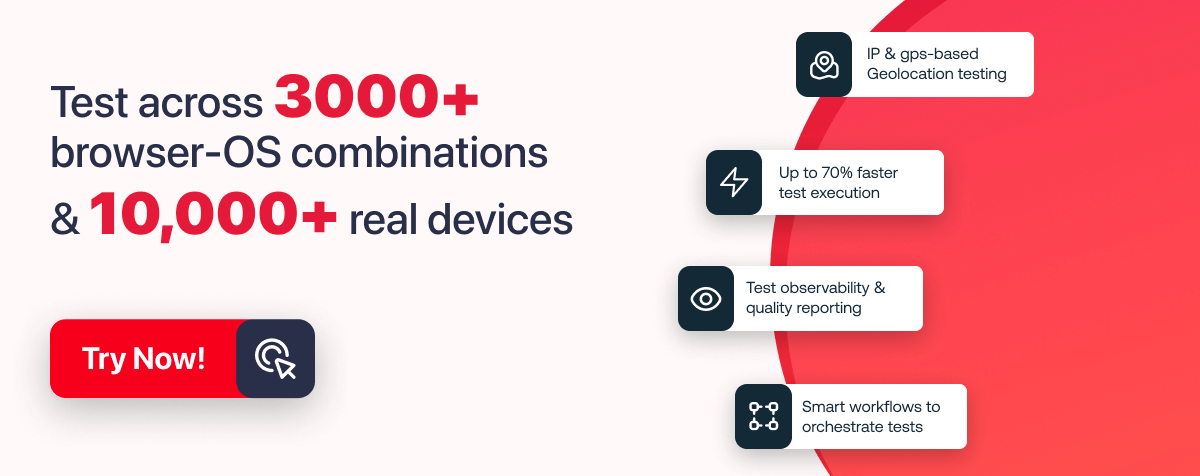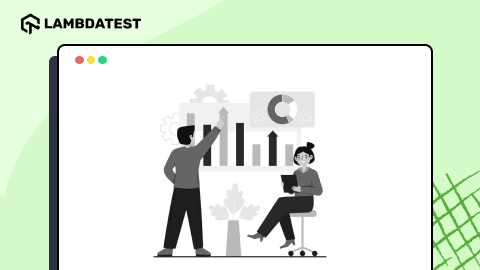Addressing the Psychological Barriers to AI in Test Automation
Farzana Gowadia
Posted On: April 24, 2025
![]() 24438 Views
24438 Views
![]() 6 Min Read
6 Min Read
Most people believe that implementing AI in test automation fails due to technical limitations.
But that’s rarely the case.
My experience implementing new tools for teams shows a more fundamental truth: psychological resistance is the true barrier between promise and practice.
Over time, I’ve developed a process that I regularly use for updating existing workflows.
In this guide, I’ll walk you through that exact process.
The Resistance You Won’t See
Two powerful psychological barriers silently sabotage AI adoption in testing organizations: Fear of Obsolescence and Black Box Aversion.
Fear of Obsolescence
For QA professionals, AI surfaces a deeply personal question: “If AI writes and maintains tests, what remains for me?”
There are three mechanisms through which this fear manifests :
- Misinterpreting AI’s role: Many testers equate AI with complete automation, assuming it will wholly replace human testing. But the reality is different. AI augments human intelligence rather than replacing domain expertise, test strategy, or critical thinking. Until teams understand this distinction, fear drives decisions.
- Leadership communication gaps: Organizations pushing AI adoption without addressing “what’s in it for me?” breed suspicion. Messages focused solely on “efficiency” and “cost-cutting” positioned AI as a downsizing tool rather than an enhancement to testers’ capabilities.
- Missing skill bridges: Even motivated testers often lack pathways to engage with AI effectively. Without training and support, the gap between those who “speak AI” and those who don’t creates anxiety and resistance.
Black Box Aversion
QA professionals build their identity around trust—in systems they test, tools they use, and outcomes they validate. AI often operates as a “black box,” triggering profound discomfort.
Black box aversion manifests as a reluctance to trust systems with hidden or opaque internal logic.
Put simply: “If I can’t understand how it reached that decision, how can I trust it to make the right one?”
Three factors amplify this aversion in QA contexts:
- QA’s foundation in determinism: Traditional test scripts follow clear “if X, then Y” logic. Testers trace every step. With AI, things change. If AI can automatically adapt to the changes on the UI front, test-case results become unpredictable from a statistical perspective. Did it click the right button, or did the AI decide to click a completely different button to complete the test?
- Accountability confusion: When tests fail or miss critical bugs, accountability becomes murky. Who bears responsibility? The QA engineer? The vendor? The model itself?
- Expertise displacement: Testers pride themselves on system knowledge. Trusting black-box AI feels like outsourcing judgment to a tool they cannot debug. If something breaks, who would fix it and how?
The Organizational Impact of Psychological Barriers
These obstacles create a ripple effect throughout the organization. It ends up with:
- Wasted investment: You still have upfront costs for licensing and onboarding, but the usage remains significantly low.
- Operational friction: If AI fails a test, engineers then have to create manual tests, which can lead to redundant manual work.
- Cultural erosion: Mandating AI without appropriate buy-ins will spread innovation fatigue that would get passed on to other initiatives.
It doesn’t have to be this way, however. There are better ways to make the implementation successful.
A Phased Implementation Plan for Implementing AI in Test Automation
Over time, I realized that the best way to go about implementing AI-native workflows for QA teams is through phased implementation.
Here’s how I went about implementing KaneAI in my team as a recent development.
Phase 1: Building Psychological Safety (First Month)
The foundation of successful AI adoption begins with creating psychological safety where teams can engage with AI without fear.
You want to acknowledge concerns openly rather than dismissing them, creating space for an honest conversation about job security and changing roles.
These conversations naturally lead to hands-on experimentation opportunities where failure carries no consequences for the QA team members and running AI-generated tests alongside manual tests without replacing anything creates parallel implementation that lets teams witness AI capabilities without feeling threatened.
This approach has helped build confidence when AI catches issues humans missed while demonstrating complementary strengths rather than competition.
Phase 2: Reframing Roles and Value (Months 2-3)
Psychological safety enables QA professionals to reimagine their roles alongside AI. Now, career conversations can show how AI enhances expertise rather than threatens jobs. These discussions reveal which testing activities burden your team most.
Target these pain points—especially tedious regression tests—as your first AI implementation areas.
Next, add feedback loops where testers improve AI performance. These exchanges prove testers shape AI rather than just consume it. Complete this reframing by measuring human success metrics, not just technical ones. Create dashboards tracking quality improvements, career growth, and collaboration alongside efficiency.
Phase 3: Transforming Quality Culture (Months 4-6)
Psychological safety and role clarity that we established in the previous phases help you create a foundation for the deeper transformation of quality processes across the organization.
With that, new governance frameworks balance AI autonomy with human oversight, maintaining human judgment for critical paths while giving AI increasing responsibility in lower-risk areas.
This balance preserves the essential role of human expertise while leveraging AI’s strengths, creating a collaborative model that respects both.
Teams freed from psychological barriers often discover unexpected applications beyond basic test generation, finding innovative ideas that technical implementation alone could never achieve.
The Psychological Journey Matters More Than Timelines
While I’ve outlined a 6-month framework, psychological adoption follows human rhythms, not project plans.
The most successful implementations recognize that rushing the adaptation will inevitably create resistance, slowing down technical adoption.
Over the years, I’ve noticed that a counterintuitive approach worked better: organizations that allowed extra time for psychological adjustment ultimately achieved faster overall adoption than those focused exclusively on technical implementation speed.
Moving Forward
The old way of thinking positioned AI as a technical solution for overcoming testing bottlenecks, but the new paradigm recognizes this as AI, which enhances software testers.
Start your transformation with a pilot — select one team, one AI use case, and one trust-building ritual like paired reviews between human and AI outputs.
As more organizations embrace psychologically aware AI implementation, we collectively move toward test automation that delivers beyond technical metrics: creating trusted, adopted, and sustainable quality practices that serve the entire technology ecosystem.
Got Questions? Drop them on LambdaTest Community. Visit now

















